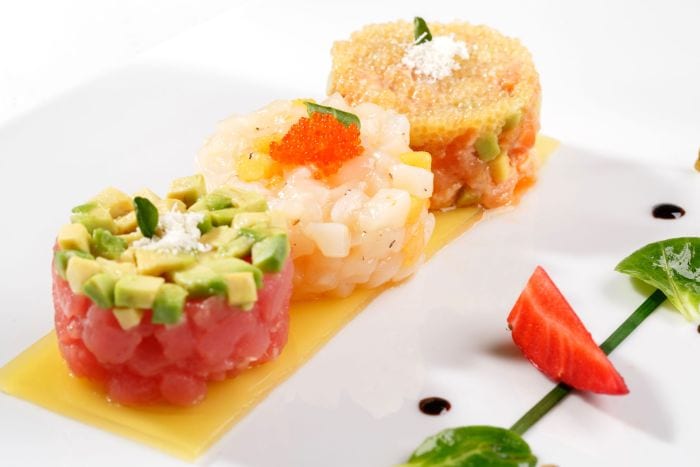The anisakis is a parasite that can be found in its larval form in parasitized raw or undercooked fishes like cod, haddock, fluke, pacific salmon, herring, flounder, squid, cuttlefish and monkfish. On the contrary, It is absent from species who live in waters of low salinity.
It might be risky for human health because of the potential appearance of an intestinal infection and allergic reactions to chemicals left in the fish meat.
The correct preservation of different types of food is essential for maintaining their quality. One of the principal techniques used for reaching this goal is freezing. The right choice of its timing and temperature is related to the type of product that you are treating. For example, raw fish can benefit from this method, if correctly done, in terms of your clients’ safe consumption. In fact, the frosting process prevents the proliferation of the anisakis.

How can you reassure your clients of raw fish dishes’ safety?
Freeze the product for at least 24 hours at -20 °C before thawing it for the service. This is the safe way to kill the parasite.
Refrigeration process can be time consuming and complex in terms of temperature control when the state of the core of the meat is the most difficult to check.
The technology can help you to ensure the correct and safe preparation of delicate dishes, like raw fish, in an automatic, efficient and simple way.
In this case, a blast chiller is useful for both the freezing and the thawing phase: the freezing preserves the appearance, moisture content, consistency, texture, aroma, flavor and nutritional value of food because the micro crystals formed will retain the water during the defrosting stage carried out before the service.
Automation grants that the kitchen equipment manages the entire process. Simplicity is the upside of the usage of an intuitive control’s panel. Efficiency is translated in a faster workflow.
To sum up, a correct handling of the freezing process ensures the preparation of anisakis-free fish. Let your clients try your delicious recipes in safety.